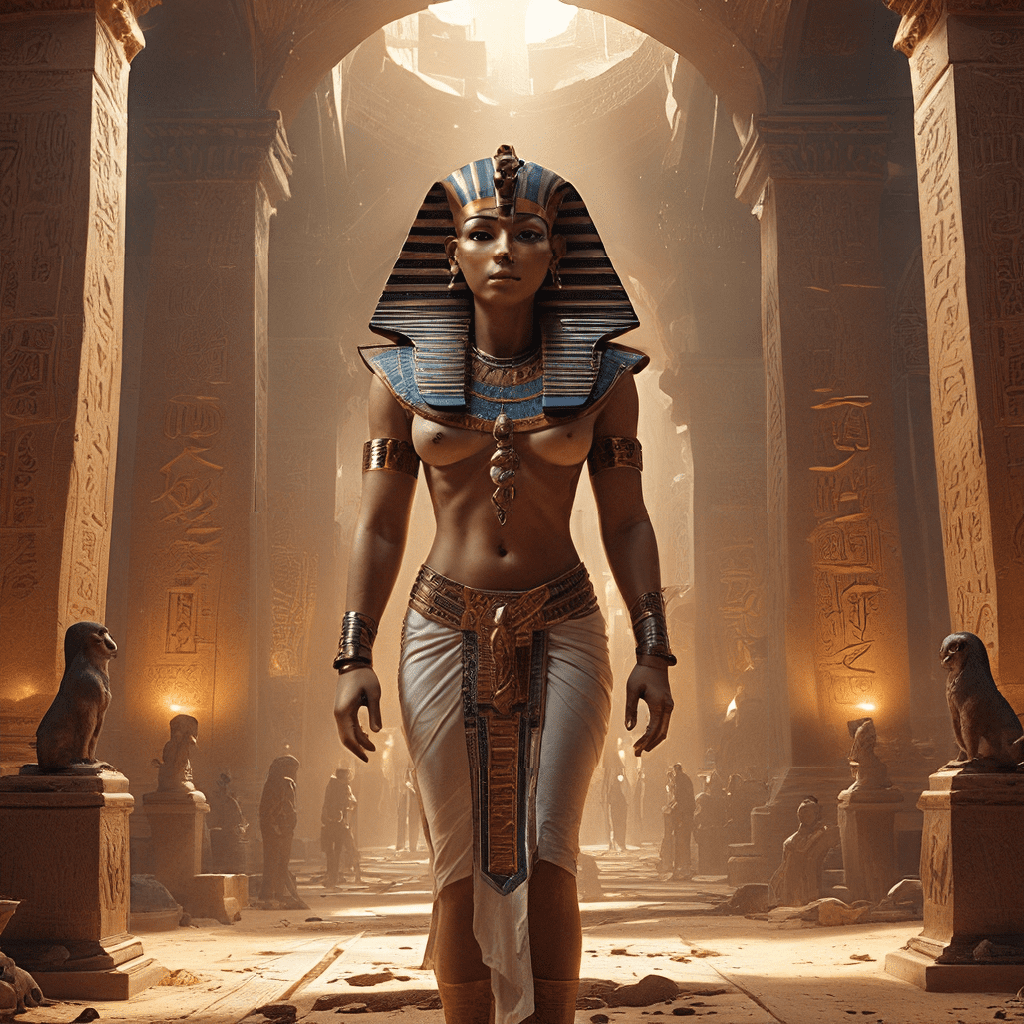The Egyptian Underworld: The Mysteries of the Afterlife
1. The Journey Begins: Death and the Soul
The ancient Egyptians believed in an afterlife, a realm where the souls of the deceased continued their journey. They didn’t see death as an end but as a transformation, a passage into the next world. The concept of the soul was complex, encompassing different aspects. The “ka,” often depicted as a double, represented the person’s vital force or life essence. The “ba,” symbolized by a human-headed bird, was the soul’s personality and consciousness. These souls would embark on a perilous journey through the Underworld, seeking eternal peace.
To achieve this peace, the deceased’s heart was weighed against the feather of Maat, the goddess of truth and justice. The heart, considered the seat of consciousness and emotion, was a symbol of the individual’s actions and desires throughout life. If the heart was lighter than the feather, it meant the person lived a just and righteous life and was granted entry into the afterlife. This weighing ceremony was central to the Egyptian belief system, emphasizing the importance of living a moral life while on Earth. Funerary rituals and offerings were crucial, believed to provide nourishment and guidance to the deceased’s soul during its journey.
2. The Land of the Dead: Entering the Netherworld
The Egyptian Underworld, known as the Duat, was a vast and mysterious realm, a journey through darkness and perils. It was a land of many places, including Amenti, a paradise described as a fertile land filled with lush vegetation, and the Fields of Reeds, where the righteous would spend their afterlife. The River of the Dead, a mystical waterway flowing through the Underworld, played a vital role. A ferryman named Charon steered the deceased across the river, transporting them from the mortal world to the land of the dead. Facing these dangers, the soul needed guidance and protection, which was often provided by the gods of the Underworld.
3. The Gods of the Underworld: Guardians and Guides
The most powerful figure in the Underworld was Osiris, the King of the Dead. Osiris, known for his wisdom and justice, judged the deceased’s heart during the Weighing Ceremony. Anubis, the jackal-headed god of mummification and funerals, was responsible for preparing the deceased for the afterlife. With his knowledge of the underworld, he guided the soul through the treacherous journey. Thoth, the scribe of the gods, recorded the deceased’s actions, ensuring a fair judgment based on their deeds. Hathor, the goddess of love and beauty, welcomed the righteous, offering them solace and comfort in the afterlife. Other deities like Nephthys, the protector of the deceased, Serket, the goddess of healing, and the demon Apep, the embodiment of chaos, all played significant roles in the Underworld’s intricate tapestry.
4. The Trials of the Afterlife: Facing Judgment
The Weighing of the Heart Ceremony was one of the most important trials in the Egyptian afterlife. The deceased’s heart was placed on one side of a scale, while the feather of Maat rested on the other. The weighing represented a cosmic justice, where every action and thought was judged. To aid the deceased, the Book of the Dead, a collection of spells and rituals, was buried with the individual. The Book’s spells could protect the soul, offer guidance, and help them navigate the challenges of the afterlife. The soul was expected to confess its sins and justify its actions before Osiris, explaining why it deserved eternal peace. This confession, a testament to the Egyptian value of accountability, was a crucial part of the judgment process.
5. The Rewards and Punishments: Eternal Fate
For those who passed the trials and proved their worthiness, the afterlife offered a paradise known as the Fields of Reeds. This idyllic realm was a place of peace, beauty, and abundance, where the righteous lived a blissful eternity. The Duat, however, was a different path, a perilous journey through darkness and trials. This dark journey was reserved for those who did not pass the judgment, facing monstrous creatures and obstacles along the way. The worst fate was reserved for those who failed the Weighing of the Heart. Their hearts were devoured by the demon Ammit, a composite creature with the head of a crocodile, the paws of a lion, and the hindquarters of a hippopotamus. This symbolized utter destruction and the ultimate punishment for those who lived an unethical life.
6. The Role of Mummification: Preservation for the Afterlife
Mummification, a complex and meticulous process, was central to the Egyptian’s beliefs about the afterlife. They believed that preserving the body was vital, enabling the soul to return to its earthly form. Embalmers, highly skilled artisans, meticulously removed the organs, filled the body cavities with salt, and wrapped the remains in linen bandages. This process, while time-consuming and elaborate, was considered a sacred duty. The tomb, often adorned with intricate hieroglyphs and paintings, was designed to be the deceased’s final resting place. It served as a symbol of their life and a guide for the soul on its journey to the afterlife, ensuring a safe passage and eternal peace.




